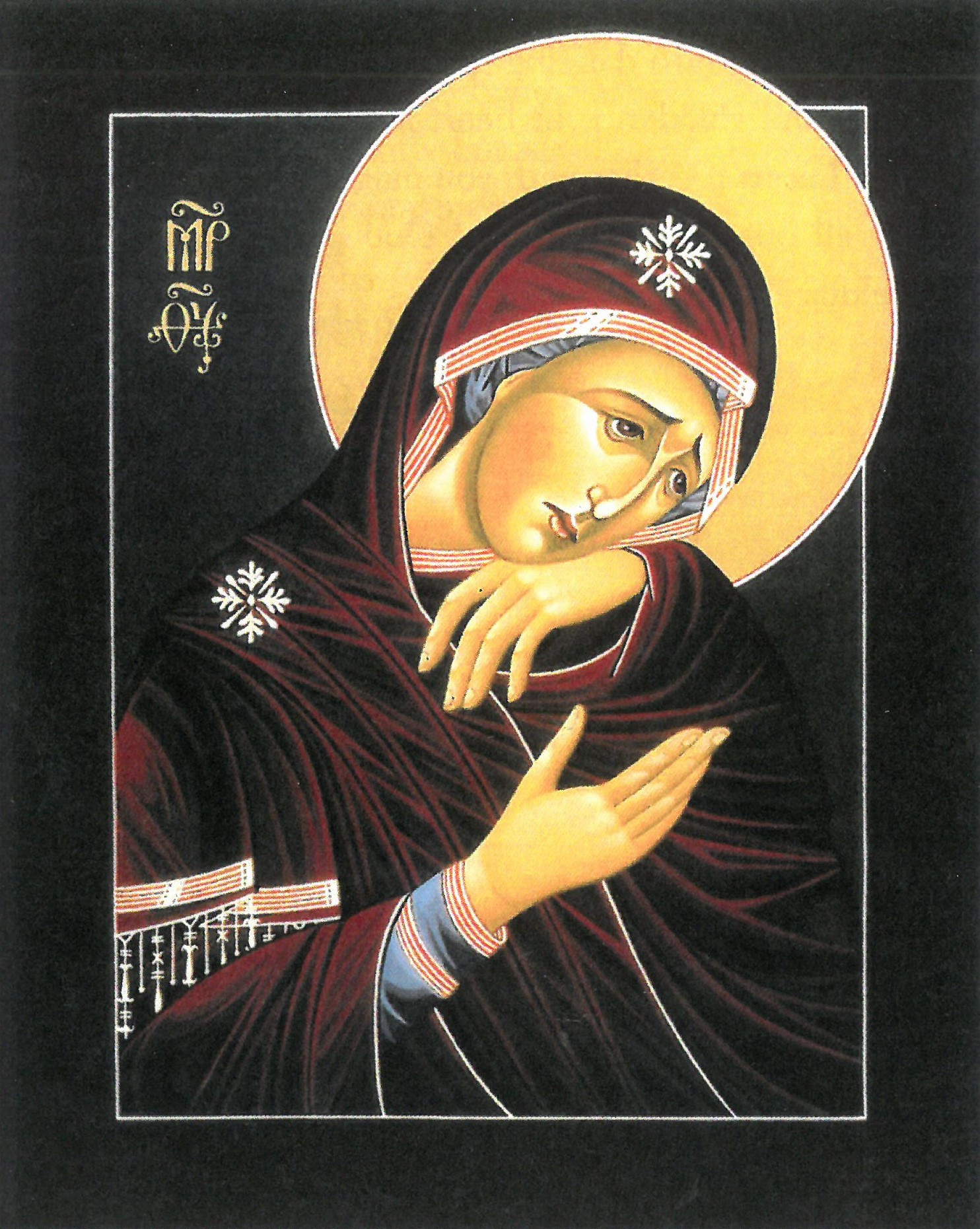Our Lady of Sorrows: A Cradle for Cumulative Sorrows, Unspoken and Untamed
share
What do you notice about Our Lady of Sorrows? Take a moment. What calls to you?

For me, first, it is her furrowed brow. I have been told my brow furrows, and I unwittingly reveal confusion, anger or sadness with the crinkling of my forehead. My face shows what my heart feels before my words are formed and spoken. Our Lady of Sorrows peers deeply into hearts and recognizes the pain that lodges there. Her eyes make known her shared anguish at the agony caused by racism, the suffering caused by misogyny, the misery caused by nationalism and the distress caused by greed that has impoverished Creation. Sometimes, it is my own dark -isms and selfishness that break my heart. She abides those, too. Sometimes, I haven’t words. Her eyes whisper the sorrow I am unable to speak.
In some devotional images, Mary bears a crown. In this rendering, Mary wears the beauty and wisdom of years. Her grayed hair, covered by a winter veil, reminds me that sorrow is cumulative. In her poignant poem, “Wondrous,” Sarah Freligh describes the “sad math” of loss, “how every subtraction is exponential, how each grief / multiplies the one preceding it …” This is deep truth. We do not grow old without being wounded. Each age holds some new sorrow that builds upon the last. Our Lady can hold our pain because she knows what it is to have loved and lost, she knows the very real pain inherent to a life long and fully lived.
As I linger with Our Lady, I am drawn to her hands, delicate and gentle. Sometimes those words conjure images of weakness, but to stay strong enough to hold sorrow while remaining tender is a miracle of the human spirit. In her new novel, The Book of Longings, Sue Monk Kidd ascribes these words to Mary the mother of Jesus: “It’s always a marvel when one’s pain doesn’t settle into bitterness, but brings forth kindness instead.” With her left hand, Our Lady gathers to herself the sorrow of the world, yet her right remains outstretched, open still. In that space, with her ample robe, she wraps the suffering and loss of our lifetime’s, our generations’, pandemic. She knows the ache of our hearts in her own and cradles us there, each of us and all of us together, one though distant.
The kontakion prayed when our Orthodox brothers and sisters honor this feast in February is “Rejoice, much-sorrowing Mother of God, turn our sorrows into joy and soften the hearts of evil men!” In this is resonance with our own tradition. We know the much beloved phrase that Catherine wrote to Frances Warde in 1841, just shy of six months before her own death: “This is your life, joys and sorrows mingled, one succeeding the other.”[1] But it is Joanna Regan and Isabelle Keiss’s reflection on this quote that resonates now: “Catherine’s spiritual vision puts no blame upon human instruments for the pain, sufferings, or deprivations that entered her life. … Whatever way, to love [God] was to welcome the painful, difficult, sorrowful, or suffering moment.”[2]
Our Lady and Catherine, both, invite us to stay awhile with the sorrow, to welcome it. We needn’t try to tame it. We needn’t rush to busy ourselves nor grasp for joy. What precious new mercy might be born when we dwell in the company of Catherine and Our Lady of Sorrows?
[1] Catherine McAuley to Frances Warde, May 28, 1841, in The Correspondence of Catherine McAuley ed. Mary C. Sullivan (Baltimore, MD: Catholic University Press, 2004), 401.
[2] M. Joanna Regan, RSM and Isabelle Keiss, RSM, Tender Courage: A Reflection on the Life and Spirit of Catherine McAuley, First Sister of Mercy (Chicago, IL: Franciscan Herald Press, 1988), 121.